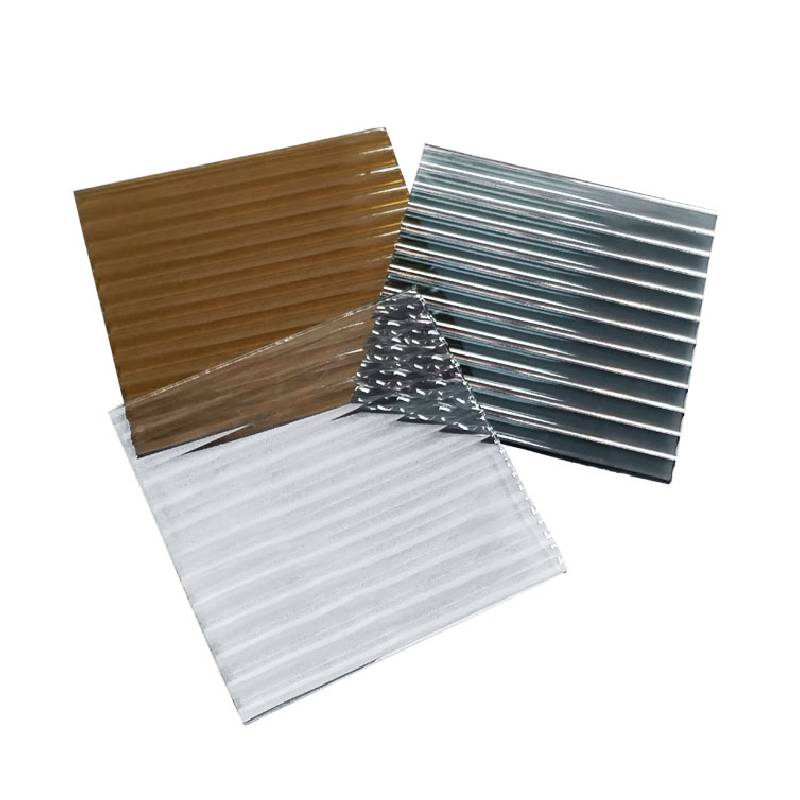The Float Glass Making Process A Comprehensive Overview
Glass production is an intricate process that has evolved over centuries, yielding a variety of glass types used in numerous applications. One of the most significant advancements in the industry is the float glass making process, developed in the mid-20th century. This method has revolutionized the way flat glass is manufactured, ensuring high quality and uniform thickness, which are vital for architectural, automotive, and various other uses.
The float glass process begins with the preparation of raw materials. The primary ingredients for glass production include silica sand, soda ash, and limestone. In addition to these, various additives may be incorporated to enhance specific properties of the glass, such as color, strength, or UV resistance. Thoroughly mixing these materials is crucial, as any impurities can affect the final product's clarity and durability.
Once the raw materials are prepared, they are fed into a furnace where they are heated to extremely high temperatures, typically around 1,700 degrees Celsius (3,092 degrees Fahrenheit). This intense heat melts the mixture, transforming it into molten glass. The melting process must be carefully controlled to ensure that the glass is free from bubbles and other imperfections, which are detrimental to its quality.
After reaching the desired consistency, the molten glass is poured onto the surface of a molten tin bath. The float glass process owes its name to this step, as the slag-like properties of molten glass allow it to float on the tin, creating a smooth and flat surface. The thermal properties of the tin also play a critical role in evenly distributing heat, which helps maintain the glass's temperature as it gradually cools.
float glass making process
As the glass flows across the tin bath, it spreads out and thickens, achieving the precise dimensions required. The continuous movement of the glass ensures uniform thickness, typically ranging from 2 mm to 19 mm. Following this, the glass moves into the annealing lehr, a controlled furnace where it is gradually cooled. This step is crucial as rapid temperature changes can induce stress, leading to the formation of cracks.
Once the glass has cooled adequately, it is cut into large sheets and can undergo further treatments, such as coating or laminating, depending on the intended application. Quality control is an integral part of the float glass process. Manufacturers conduct rigorous testing to check for flaws, thickness variations, and optical clarity. Advanced technologies, including automated inspection systems, help ensure that the glass meets industry standards.
The float glass making process stands out for its efficiency and the high-quality results it yields. With nearly perfect optical properties and a smooth surface finish, float glass has become the standard for many applications, such as windows, facades, and mirrors. Furthermore, advancements in technology continue to enhance the sustainability of the float glass industry, with many manufacturers implementing recycling practices and energy-efficient production techniques.
In conclusion, the float glass making process is a sophisticated and refined method that exemplifies modern glass production. Its continuous innovation not only meets the growing demands of various industries but also contributes to eco-friendly practices, ensuring that the glass industry can support sustainable development. As technology progresses, the future of float glass promises to be even more exciting, opening up new possibilities for design and functionality.
 Afrikaans
Afrikaans  Albanian
Albanian  Amharic
Amharic  Arabic
Arabic  Armenian
Armenian  Azerbaijani
Azerbaijani  Basque
Basque  Belarusian
Belarusian  Bengali
Bengali  Bosnian
Bosnian  Bulgarian
Bulgarian  Catalan
Catalan  Cebuano
Cebuano  Corsican
Corsican  Croatian
Croatian  Czech
Czech  Danish
Danish  Dutch
Dutch  English
English  Esperanto
Esperanto  Estonian
Estonian  Finnish
Finnish  French
French  Frisian
Frisian  Galician
Galician  Georgian
Georgian  German
German  Greek
Greek  Gujarati
Gujarati  Haitian Creole
Haitian Creole  hausa
hausa  hawaiian
hawaiian  Hebrew
Hebrew  Hindi
Hindi  Miao
Miao  Hungarian
Hungarian  Icelandic
Icelandic  igbo
igbo  Indonesian
Indonesian  irish
irish  Italian
Italian  Japanese
Japanese  Javanese
Javanese  Kannada
Kannada  kazakh
kazakh  Khmer
Khmer  Rwandese
Rwandese  Korean
Korean  Kurdish
Kurdish  Kyrgyz
Kyrgyz  Lao
Lao  Latin
Latin  Latvian
Latvian  Lithuanian
Lithuanian  Luxembourgish
Luxembourgish  Macedonian
Macedonian  Malgashi
Malgashi  Malay
Malay  Malayalam
Malayalam  Maltese
Maltese  Maori
Maori  Marathi
Marathi  Mongolian
Mongolian  Myanmar
Myanmar  Nepali
Nepali  Norwegian
Norwegian  Norwegian
Norwegian  Occitan
Occitan  Pashto
Pashto  Persian
Persian  Polish
Polish  Portuguese
Portuguese  Punjabi
Punjabi  Romanian
Romanian  Russian
Russian  Samoan
Samoan  Scottish Gaelic
Scottish Gaelic  Serbian
Serbian  Sesotho
Sesotho  Shona
Shona  Sindhi
Sindhi  Sinhala
Sinhala  Slovak
Slovak  Slovenian
Slovenian  Somali
Somali  Spanish
Spanish  Sundanese
Sundanese  Swahili
Swahili  Swedish
Swedish  Tagalog
Tagalog  Tajik
Tajik  Tamil
Tamil  Tatar
Tatar  Telugu
Telugu  Thai
Thai  Turkish
Turkish  Turkmen
Turkmen  Ukrainian
Ukrainian  Urdu
Urdu  Uighur
Uighur  Uzbek
Uzbek  Vietnamese
Vietnamese  Welsh
Welsh  Bantu
Bantu  Yiddish
Yiddish  Yoruba
Yoruba  Zulu
Zulu 

